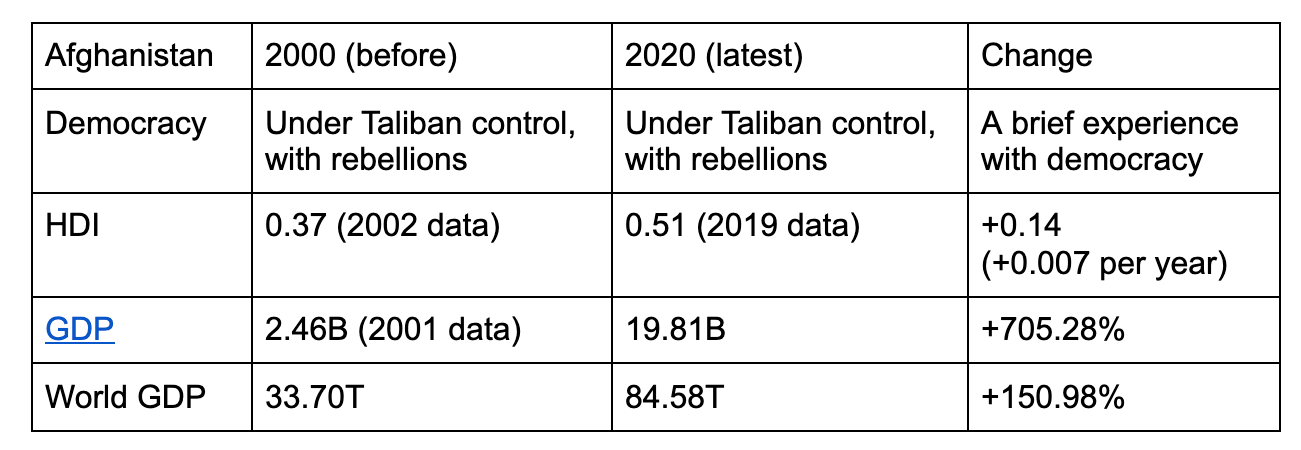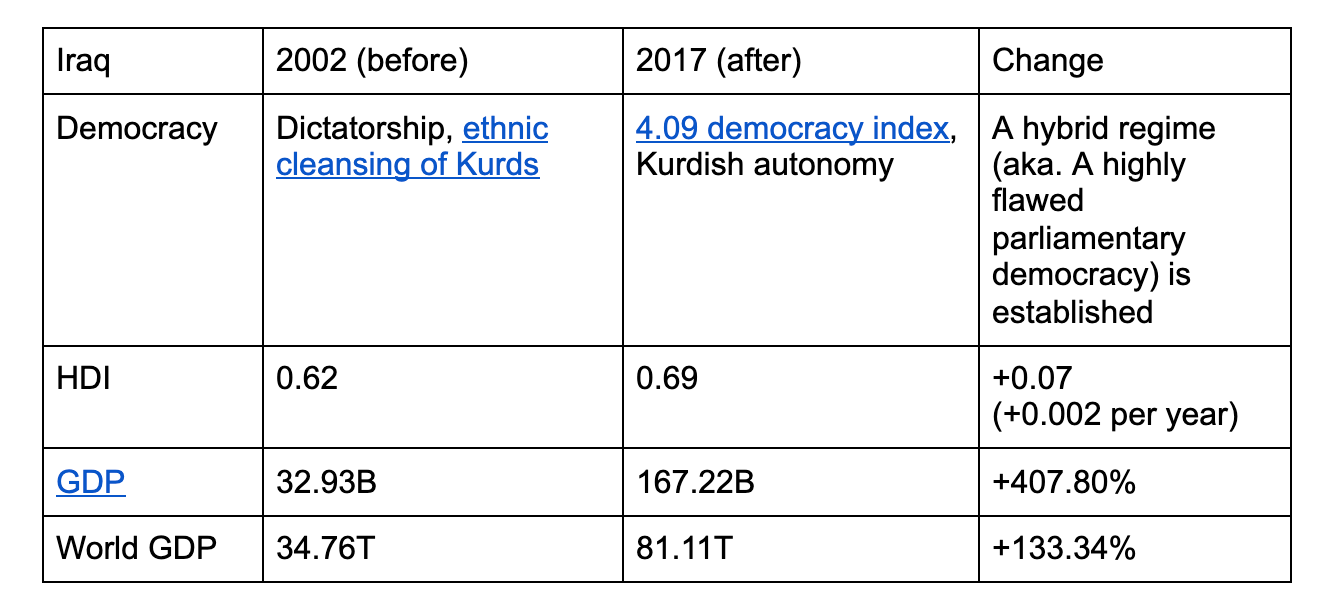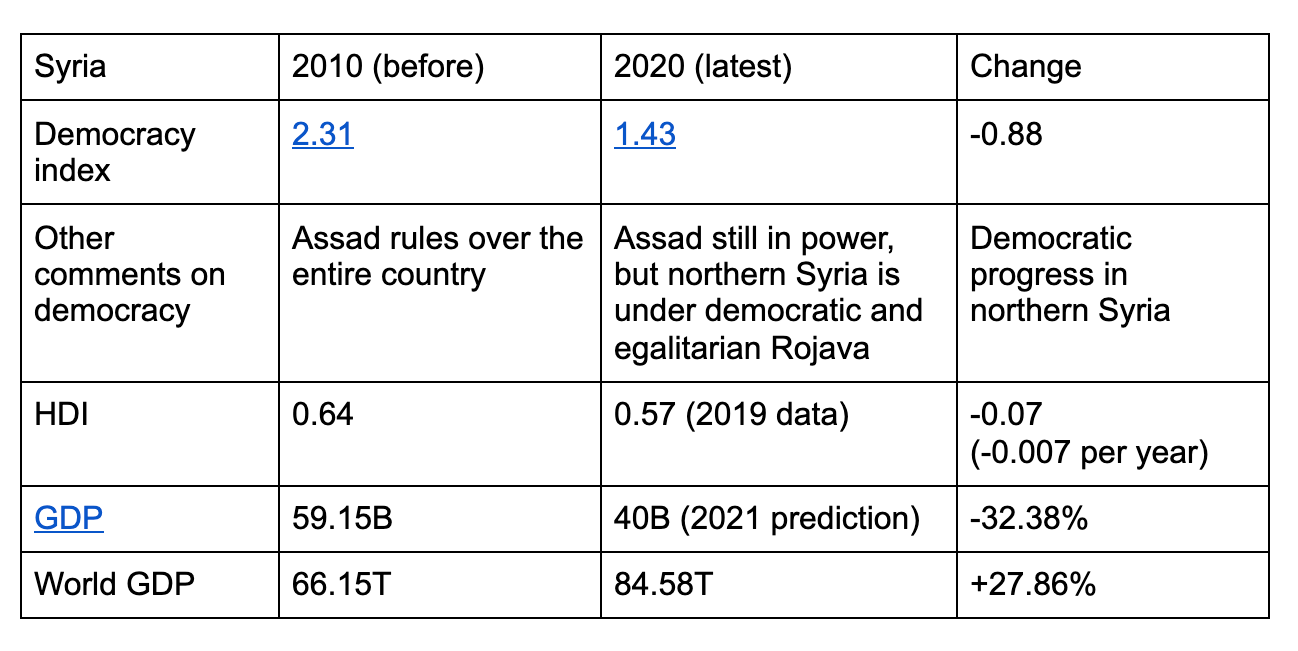U.S. and the Middle East: 20 Years since the ‘War on Terror’
The attacks on the morning of September 11, 2001, forever changed the American outlook. Before the 9/11 terrorist attacks on the World Trade Center, the perception of the American homeland was that American soil is insulated from attacks. That sense of security was destroyed by mass civilian casualties in the wake of the 9/11 attacks spawning a new period of domestic and international policy. This renewed period of interventionist foreign policy in the Middle East would come to be known as the War on Terror.
This past September marked the 20th anniversary of those infamous attacks. In the past 20 years, the United States has intervened liberally in the Middle East. While some of these actions have been relevant to the War-on-Terror, others are deeply politically misguided lending support to new regimes or authentic rebellions against authoritarianism during the Arab Spring.
In observing the nations the United States has undertaken major interventions in, there are numerous metrics of political, social, and economic factors deeply affected by the intervention. If an index was not available at the specified time period, I have introduced qualitative factors related to the metric. A short explanation of each of these indices can be found at the end of this article.
Note that these indices might not always paint the full picture, nor do they necessarily imply causation. They are just here to show how democracy, economic activity, and human well-being has changed in countries in which the United States intervened.
Now, we will go over the five countries in which the United States has had significant military interventions:
Yemen
Yemen has long had a problem with Al-Qaeda insurgencies since 1998, complicated by the Yemeni reunification. The United States and Saudi Arabia had urged the Yemeni government to act against Al-Qaeda, a prominent terrorist group led by Osama Bin Laden.
By the early 2010s, the insurgency had taken over large swathes of southeastern Yemen, and declared an Al-Qaeda emirate. Soon after, President Saleh resigned during the Arab Spring protests in Yemen, replaced by his vice president Abdrabbuh Mansur Hadi.
On September 21, 2014, however, former president Saleh supported an insurgency led by the Houthis, a Shia-dominated militant group based in western Yemen, against his successor. This began a new Yemeni Civil War that still rages on today. The United States had provided intelligence and logistical support, while Saudi Arabia led the military intervention against the Houthis in support of the Yemeni government.
The collapse of infrastructure has led to a grave humanitarian crisis, with famine, cholera, and the flu ravaging the lands of Yemen.
Afghanistan
General rundown:
Before the US intervention, Afghanistan was locked in a conflict between the Taliban-led Islamic Emirate, and the Northern Alliance in northeastern Afghanistan. Less than a month after the 9/11 attacks, the United States intervened in favor of the Northern Alliance to topple the Islamic Emirate.
After the victory in intervention, an interim government was set up. However, the Taliban insurgency continues, causing more than 50 thousand casualties on both sides to date. Kabul fell to the Taliban on August 15, in the midst of the US withdrawal, and by August 30, NATO had finished evacuation.
Links within table: GDP.
Iraq
General rundown:
The US invasion of Iraq is arguably one of the most well-known theatres of the War on Terror. A US-led coalition overthrew Saddam Hussein’s dictatorship in less than six weeks, and gradually established a parliamentary democracy dominated by a Shia majority after crushing the remaining insurgencies. Through this process, a region known as Iraqi Kurdistan gained autonomy, and a system was set up to enable power-sharing among the Sunni, Shia, and Kurdish representatives.
With the US withdrawal in 2011, new insurgencies led by the Islamic State of Iraq and Syria (ISIS) escalated. It grew into a civil war, and by August 2014 ISIS swept over northern Iraq and almost captured Baghdad, prompting the Iraqi Prime Minister to resign.
Over the next three years, a coalition led by the US intervened in favor of the Iraqi government, gradually pushing back ISIS. By November of 2017, the last ISIS strongholds have been captured.
Links within table ethnic cleansing of Kurds, 4.09 democracy index, GDP.
Libya
General rundown:
With the spread of the Arab Spring, protests erupted in Libya against the dictator Muammar Gaddafi, and eventually escalated into a civil war. Within three months, the rebels successfully took control of all of Libya with support from NATO, and Gaddafi was killed in action.
The National Transition Council, which was set up during the civil war, took power and began a transition towards democracy. The first democratic election was held in 2012, but by 2014, political disputes had led to a second civil war.
The Second Libyan Civil War lasted from 2014 to late 2020, and a national unity government was set up in March 2021. A presidential election will be held in late 2021 to early 2022.
Syria
General rundown:
Just as in Libya, what began as an Arab Spring protest escalated into a civil war. Since 2000, Syria has been ruled by President Bashar al-Assad, who took over from his father after his death. Early on, pro-democracy rebels and Islamist rebels, together known as the Syrian Opposition, took control of much of northern Syria near the Euphrates River, while Kurdish rebels controlled areas along the Turkish border.
In early 2013, the Islamic State started seizing checkpoints in northern Syria, gradually expanding its control and reaching a peak in late 2015, when it controlled most of eastern Syria.
Throughout the war, the United States and some of its allies had supported the Syrian Opposition and the Kurds, while Russia supported the Assad regime.
The conflict continues to rage on, though much of Syria has been returned to government control. Large areas north of the Euphrates has been under Kurdish-dominated Rojava, a government ascribing to the ideology of libertarian socialism, egalitarianism, and federalism.
Links within table: 2.31, 1.43, GDP.
Democracy index
Devised by the Economist Intelligence Unit, the Democracy Index is a general measurement of how healthy a country’s democracy is, taking into account the electoral process, civil liberties, government function, and political culture. It is on a scale from 0 to 10, with higher rating meaning better and healthier democracy.
Gross domestic product (GDP)
One of the most common measurements of economic activities, the GDP is the total economic output of a country through the year. Considering that a country’s GDP is naturally growing, any negative impact of intervention might be offset by the natural growth. This, we will compare the country in question’s real GDP, in US Dollars, with that of the world as a whole.
Human development index (HDI)
HDI is a composite measurement of life expectancy, education level, and per capita income. It goes from a scale of 0 to 1, and a higher index means a better human development. HDI naturally increases over time. For example, the United States, which is a developed country, had its HDI increase by 0.02 from 2000 to 2010; China, a rapidly developing country, had HDI increase by 0.12 from 2000 to 2010, with an average increase of 0.012 per year.
We got the HDI for the various countries from here.
Photo via Britannica






